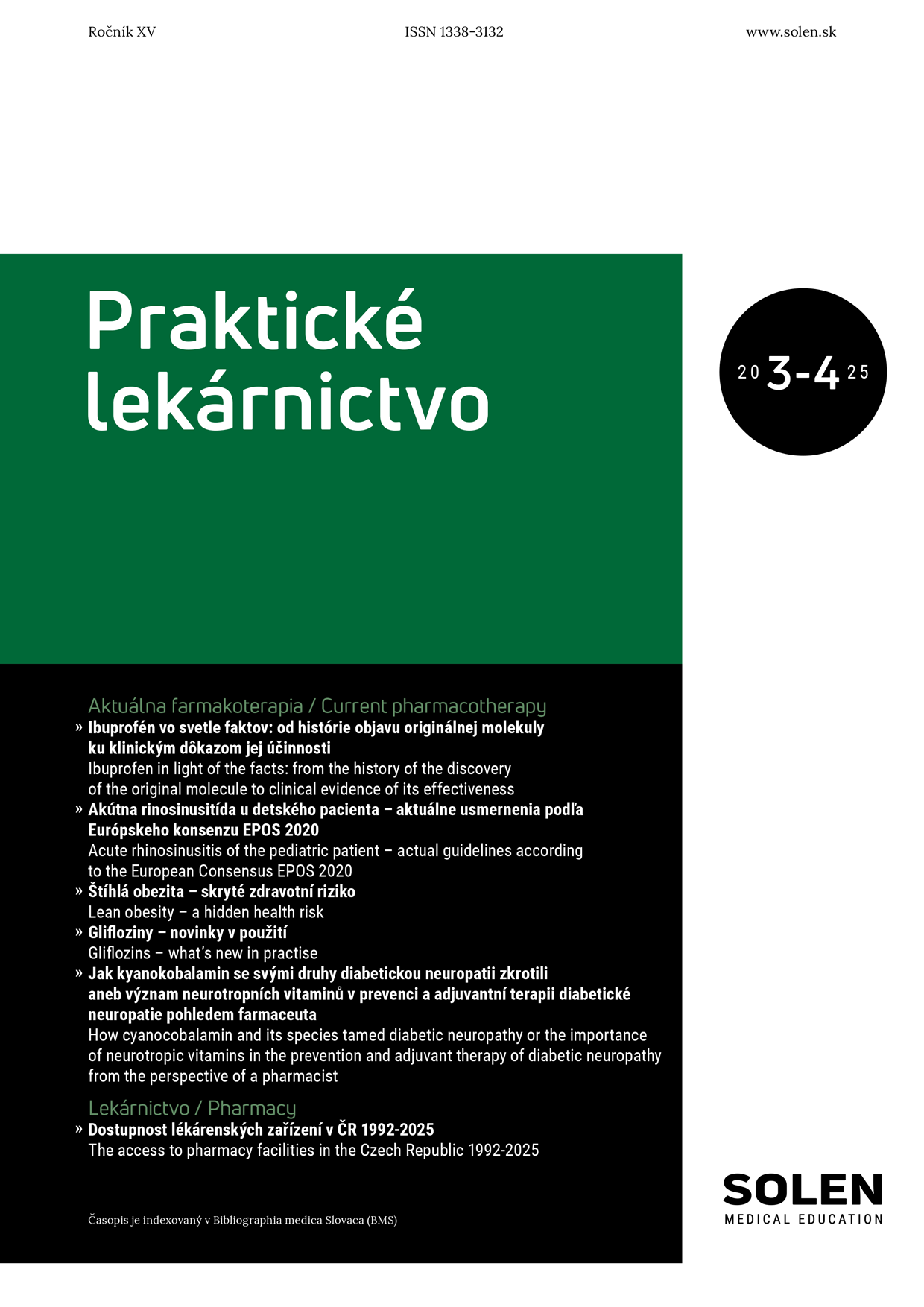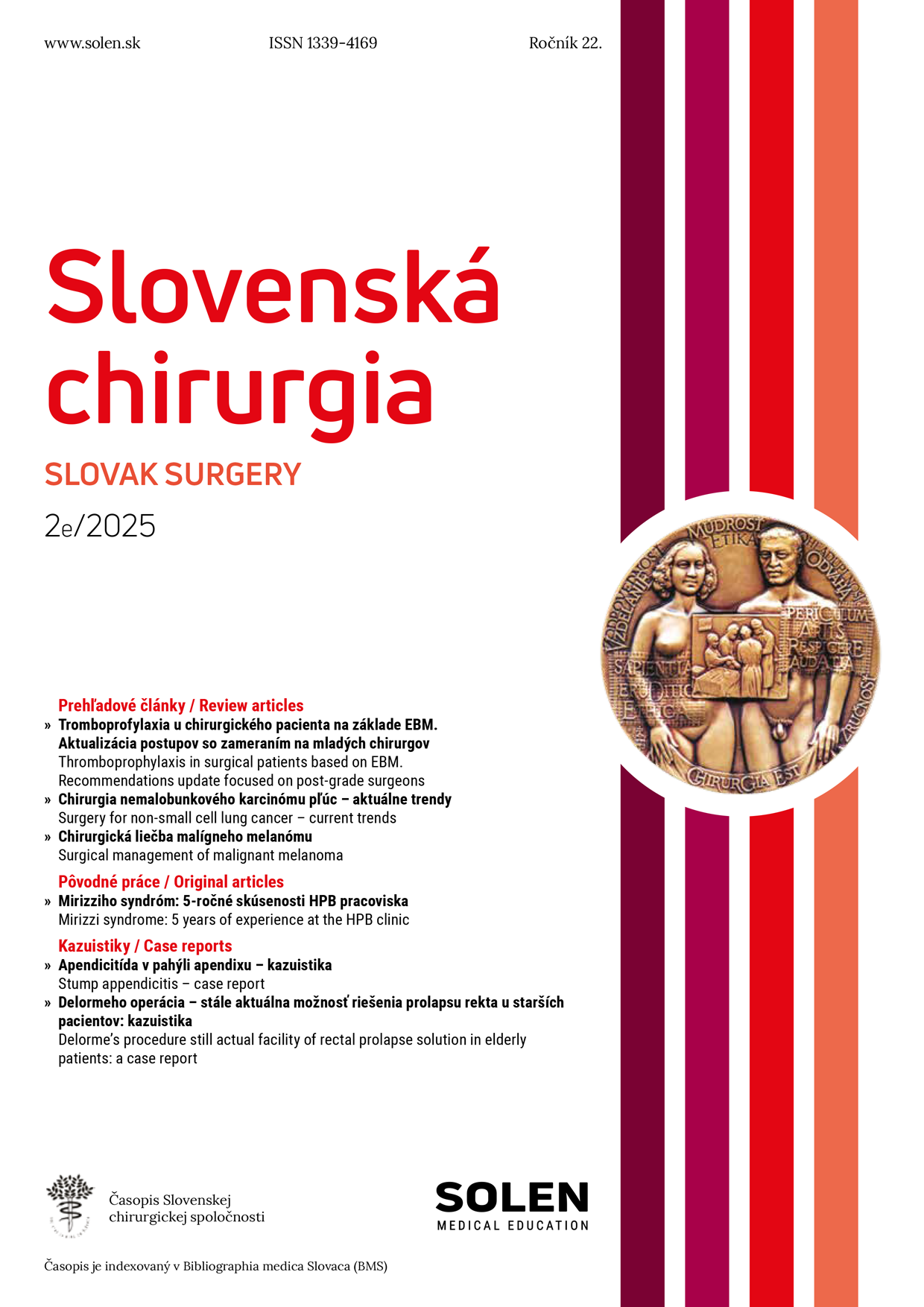Dermatológia pre prax 4/2023
Zriedkavé kožné nádory: karcinóm z Merkelových buniek a zriedkavé nádory melanocytárneho a epidermálneho pôvodu – 2. časť
Výskyt nádorov kože má každým rokom neustále stúpajúcu tendenciu. V prevažnej miere ide o nemelanocytárne typy rakoviny kože – bazaliómy a spinaliómy, ale zvyšujúcu incidenciu vykazuje aj malígny melanóm. Dermatológ v spleti tumorov však nesmie zanedbať a správne manažovať aj menej časté kožné tumory, ktorých incidencia sa pohybuje v rozmedzí 0,3 % – 3,3 %. Tieto údaje sú len približné, pretože mnohé z nich nie sú podľa MKCH samostatne kódované. Okrem zriedkavo sa vyskytujúcich nádorov epidermálneho a melanocytárneho pôvodu k nim zaraďujeme tumory kožných adnex a karcinóm z Merkelových buniek, kožné tumory hematopoetického a lymfoidného pôvodu, kožné mezenchymálne a neurálne tumory a napokon kožné tumory neistej diferenciácie. Najagresívnejší kožný nádor s najhoršou prognózou prežitia je karcinóm z Merkelových buniek. Nenápadný a nejednoznačný klinický obraz tohto nádoru v počiatočných štádiách oneskoruje správnu diagnostiku, ktorej základom je histologické a imunohistologické vyšetrenie. To platí aj pre zriedkavo sa vyskytujúce nádory melanocytárneho a epidermálneho pôvodu. Problematika je zameraná na hlavné klinické, dermatoskopické, diferenciálne-diagnostické a prognostické údaje týchto nádorov a ich následný manažment vrátane syndrómu névoidných bazaliómov.
Kľúčové slová: karcinóm z Merkelových buniek, melanocytóm, zriedkavo sa vyskytujúce nádory melanocytárneho a epidermálneho pôvodu, syndróm névoidných bazaliómov, klinika, diagnostika, manažment
Rare skin tumours: Merkel cell carcinoma and rare tumours of melanocytic and epidermal origin – 2. part
The incidence of skin tumors has annually a constantly increasing trend .The majority of skin cancer are non-melanocytic types – basal cell carcinomas and squamous cell carcinomas, but there is also a rising incidence of malignant melanoma. However, in the tangle of tumors, the dermatologist must not neglect and properly manage the less common skin tumors, whose incidence ranges from 0.3% to 3.3%. However, these figures are approximate as many of them are not separately coded according to the International Classification of Diseases (ICD). In addition to rarely occurring tumours of epidermal and melanocytic origin, these include tumours of cutaneous adnexa and Merkel cell carcinoma, cutaneous tumours of haematopoietic and lymphoid origin, cutaneous mesenchymal and neural tumours, and finally cutaneous tumours of uncertain differentiation. The most aggressive skin tumor with the worst survival prognosis is Merkel cell carcinoma. The inconspicuous and ambiguous clinical picture of this tumor in the initial stages delays accurate diagnosis, which is based on histological and immunohistological examinations. This holds true for rarely occurring tumors of melanocytic and epidermal origin. The focus of the issue is on the main clinical, dermatoscopic, differential-diagnostic, and prognostic data of these tumors and their subsequent management, including the nevoid basal cell carcinoma syndrome.
Keywords: Merkel cell carcinoma, melanocytoma, rarely occurring tumors of melanocytic and epidermal origin, nevoid basal cell carcinoma syndrome, clinic, diagnosis, management

















